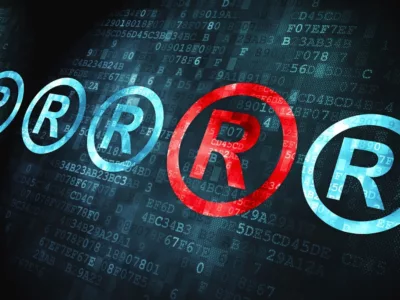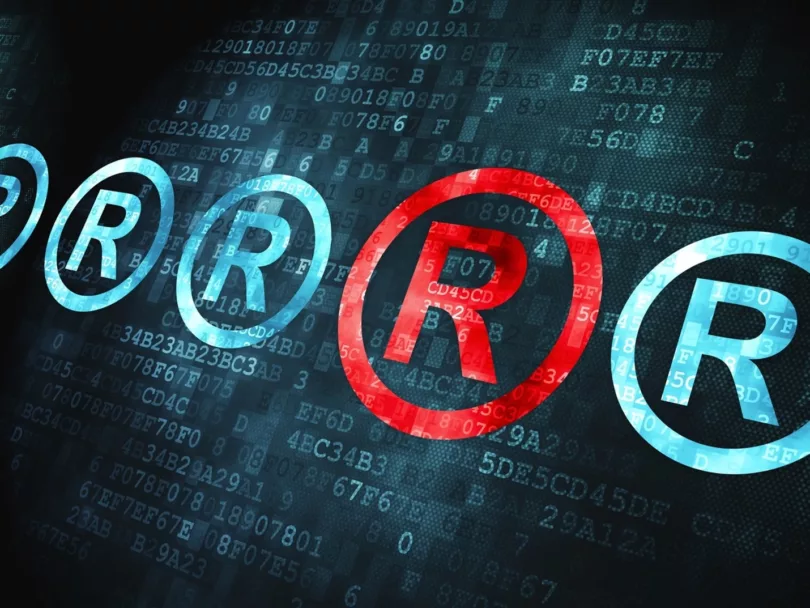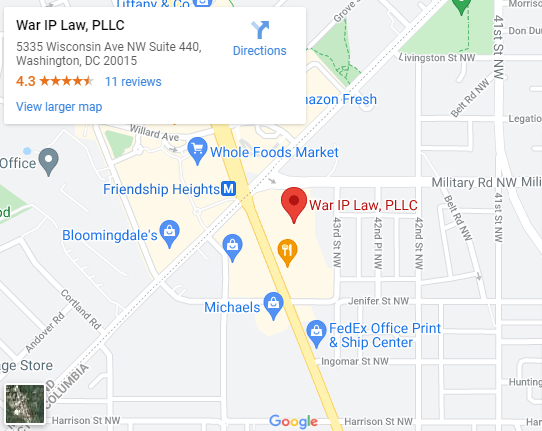Choosing the right trademark class (or classes) is one of the most important parts of the trademark registration process. The United States Patent and Trademark Office (USPTO) has 45 different trademark classifications, which include 34 for products and 11 for services. Depending on the nature of the trademark, the applicant may need to select multiple classes. If mistakes are made during this process, the application could be rejected. If you have questions about common trademark classes or other aspects of registering a trademark, you can learn more by contacting the experienced trademark attorneys of War IP Law, PLLC at (202) 800-3754.
Trademark Classes For Products or Goods

If the trademark will be applied to a specific product (a.k.a. “good”) or products, the owner will need to choose one or more of the following 34 classes:
- Class 1 – Chemicals
- Class 2 – Paints
- Class 3 – Cosmetics and Cleaning Products
- Class 4 – Lubricants and Fuels
- Class 5 – Pharmaceuticals
- Class 6 – Metals
- Class 7 – Machinery Products
- Class 8 – Hand Tools
- Class 9 – Computer and Software Products and Electrical and Scientific Products
- Class 10 – Medical Instruments
- Class 11 – Appliances
- Class 12 – Vehicle and Transportation Products
- Class 13 – Firearms and Firearm Products (i.e. ammunition, fireworks)
- Class 14 – Jewelry and Precious Metals
- Class 15 – Musical Instruments
- Class 16 – Paper and Printed Materials
- Class 17 – Rubber Products
- Class 18 – Leather Products
- Class 19 – Non-metallic Building Materials
- Class 20 – Furniture
- Class 21 – Houseware and Glass Products
- Class 23 – Yarns and Threads
- Class 24 – Fabrics and Textiles
- Class 25 – Clothing and Apparel
- Class 26 – Lace, Ribbons, Embroidery, and Fancy Goods
- Class 27 – Floor Coverings and Wall Hangings
- Class 28 – Toys and Sporting Goods
- Class 29 – Meat and Processed Foods
- Class 30 – Staple Food Products
- Class 31 – Natural Agricultural Products
- Class 32 – Light Beverages
- Class 33 – Wines and Spirits
- Class 34 – Smoking Products
Trademark Classes For Services
Trademarks that will be applied to services will fall into one of the following eleven services categories recognized by the USPTO:
- Class 35 – Advertising, Business, and Retail
- Class 36 – Insurance and Financial Services
- Class 37 – Construction and Repair Services
- Class 38 – Communications
- Class 39 – Transportation and Storage
- Class 40 – Treatment and Processing of Materials
- Class 41 – Education and Entertainment
- Class 42 – Computer, Software, and Scientific Services
- Class 43 – Restaurant and Hotel Services
- Class 44 – Medical, Beauty, and Agricultural Services
- Class 45 – Personal, Legal, and Social Services
What Are the Most Common Trademark Classes?
Trademarks and other forms of intellectual property rights are critical for many types of businesses, as these offer protection from infringement and from other entities unjustly making profits from the intellectual property of another business. However, there are a handful of more common trademark classes. If you are unsure which class applies to your trademark, you can learn more by speaking with the experienced trademark attorneys of War IP Law, PLLC.
Class 9
A wide range of products related to software, electronics, and technology are classified under the United States Patent and Trademark Office trademark class 9. This category includes many products that the majority of Americans use every day, such as:
- Smartphones
- Mobile apps
- Computer
- Software
- Headphones
A wide variety of other less common electronics are also included under class 9, such as microscopes, projection screens, and jukeboxes. This is a broad category that encompasses many different types of electronics and related products, which is what makes it one of the most common trademark classes.
Class 25
This class includes all types of clothing and apparel. These products often require trademarks for logos, designs, artwork, and other visuals included in the apparel. Once trademarked, no other entity may use the registered mark on the apparel. Additionally, the trademark owner will have the right to file an infringement lawsuit against any party that uses their trademark on similar goods without permission.
Class 35
Class 35 is a services class that encompasses a wide range of business and professional services. In broad terms, this class includes anything related to advertising, business management, business administration, or office functions.
Class 41
This class includes most services related to education and entertainment, including but not limited to:
- Training services for people or animals
- Sports, entertainment, and cultural activities
- Publishing and reporting
- Gambling and lotteries
- Language and translation services
- Schools and vocational institutions
Class 42
Those who are trademarking intellectual property related to scientific and technical services will usually file under Class 42. Common services include scientific research, clinical trials, weather services, and cloud computing services, among many others.
What to Consider When Choosing a Trademark Class
It is extremely important for trademark applicants to include all applicable classes in their application. While some trademarks may only require one class, many others require multiple classes. The USPTO officially recognizes several “coordinated classes” for each of the 45 classes of products and services – each coordinated class is related in some way. For example, Class 25 (clothing) has coordinated classes like Leather Goods, Textiles, and Advertising and Business Services.
Determining which classes apply to a particular product or service often requires extensive research. Accuracy is paramount during this stage of the application process, as filing under the wrong class or failing to include relevant classes could jeopardize your application or minimize the protection afforded by your trademark. The application should include classes for all currently offered products or services, as well as products and services that the applicant plans to offer in the near future.
Learn More from Our Trademark and Intellectual Property Lawyers
Choosing the right trademark classes can be difficult and time-consuming and mistakes could put the intellectual property of the applicant at risk. If the application is rejected, the owner may need to begin the process over again and will not be protected from infringement during this period. In addition, the application process involves many other complexities and stringent requirements, leaving very little room for errors. Many trademark applicants seek legal guidance to ensure that these mistakes are avoided and that their application is accepted. If you are struggling to choose which common trademark classes to include in your trademark registration, the seasoned intellectual property lawyers of War IP Law, PLLC are here to help. Contact us today at (202) 800-3754 with questions related to trademarks and all other intellectual property concerns.


